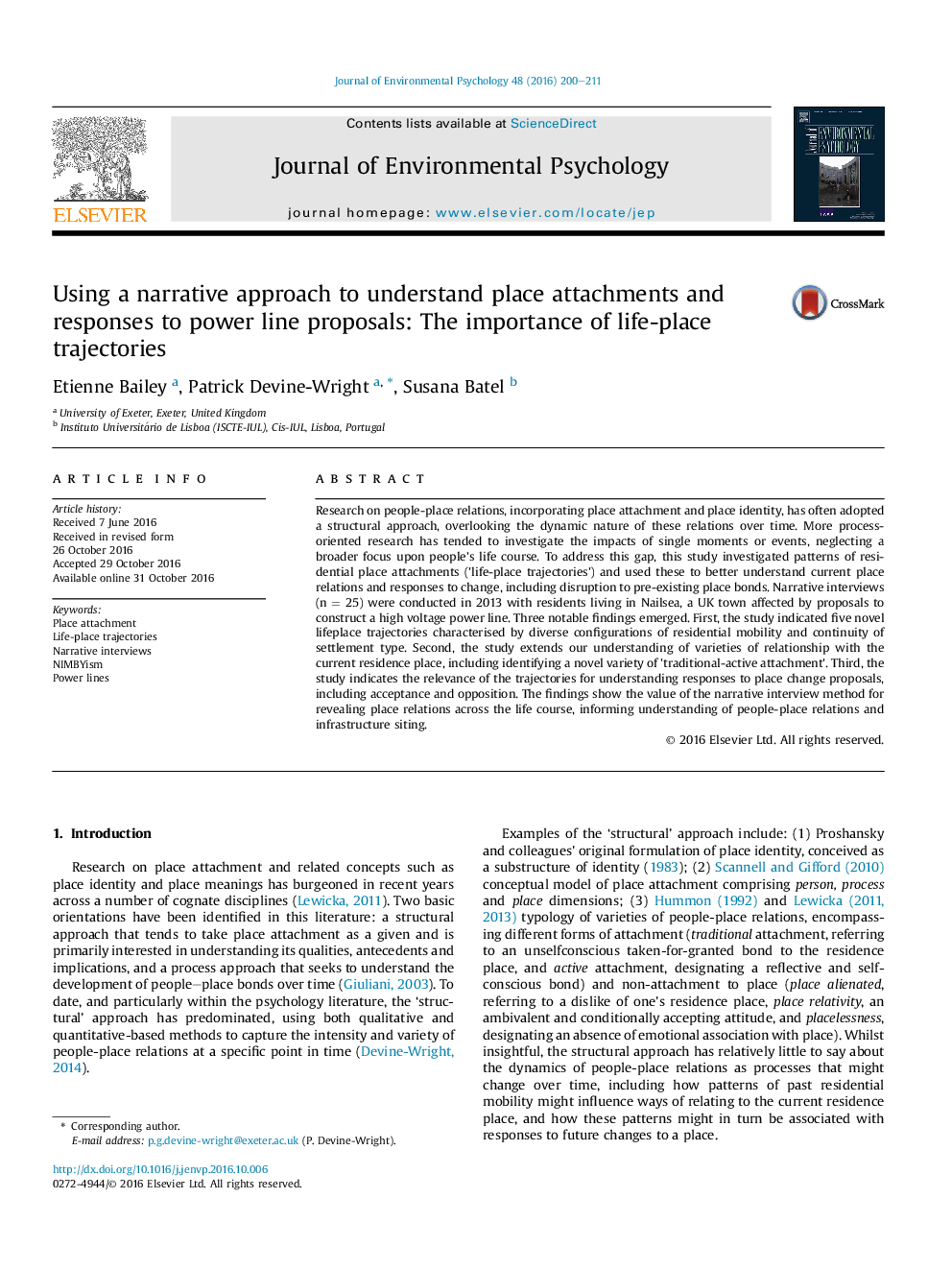| Article ID | Journal | Published Year | Pages | File Type |
|---|---|---|---|---|
| 7245431 | Journal of Environmental Psychology | 2016 | 12 Pages |
Abstract
Research on people-place relations, incorporating place attachment and place identity, has often adopted a structural approach, overlooking the dynamic nature of these relations over time. More process-oriented research has tended to investigate the impacts of single moments or events, neglecting a broader focus upon people's life course. To address this gap, this study investigated patterns of residential place attachments ('life-place trajectories') and used these to better understand current place relations and responses to change, including disruption to pre-existing place bonds. Narrative interviews (n = 25) were conducted in 2013 with residents living in Nailsea, a UK town affected by proposals to construct a high voltage power line. Three notable findings emerged. First, the study indicated five novel lifeplace trajectories characterised by diverse configurations of residential mobility and continuity of settlement type. Second, the study extends our understanding of varieties of relationship with the current residence place, including identifying a novel variety of 'traditional-active attachment'. Third, the study indicates the relevance of the trajectories for understanding responses to place change proposals, including acceptance and opposition. The findings show the value of the narrative interview method for revealing place relations across the life course, informing understanding of people-place relations and infrastructure siting.
Related Topics
Social Sciences and Humanities
Psychology
Applied Psychology
Authors
Etienne Bailey, Patrick Devine-Wright, Susana Batel,
